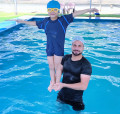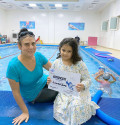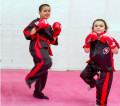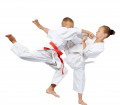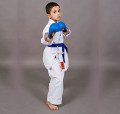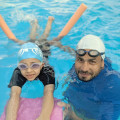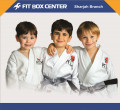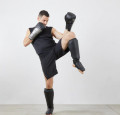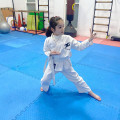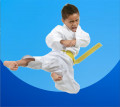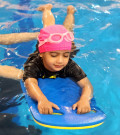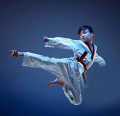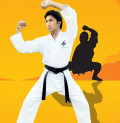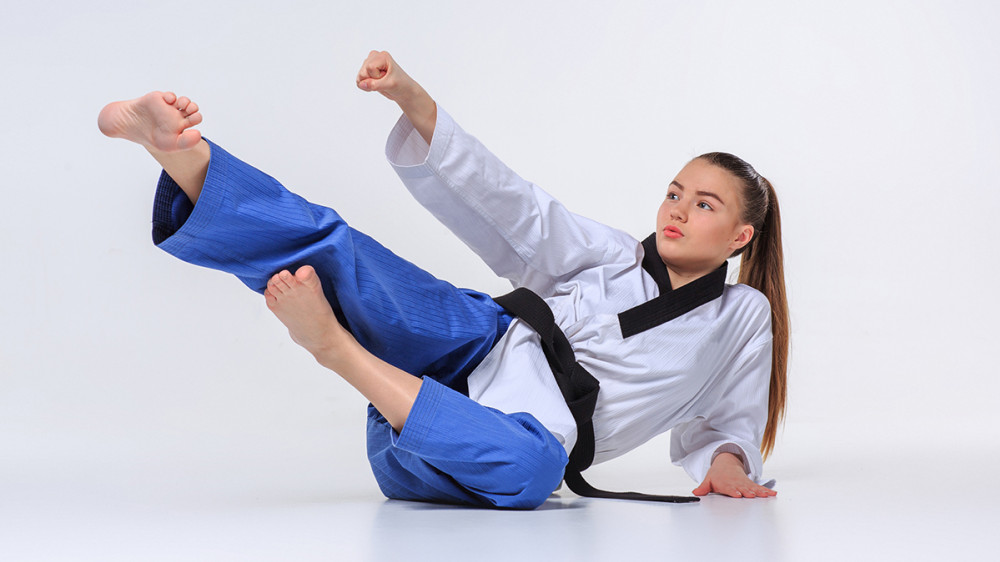
Get To Know the Karate Terms – Part 2
2023-01-09 - Martial Arts, Karate
Let’s familiarise with more terms used in martial arts. The person who practices karate is Karate-Ka and while practicing you might have noticed that karate-ka wear special loosely fit clothing. Read to know about its importance, how different coloured belts are used in the ranking system etc.
Karate-ka: A person who practices karate
A karate-ka is a person who practices the martial art of karate. The term "karate-ka" is composed of two parts: "karate," meaning "empty hand," and "ka," meaning "person." Thus, a karate-ka is a person who practices karate, a martial art that primarily focuses on striking techniques using the hands, feet, and other parts of the body. It originated in the Ryukyu Islands in what is now Okinawa, Japan and developed from the indigenous martial arts of Ryukyu Islands. It was brought to the Japanese mainland in the early 20th century during a time of cultural exchanges between the Japanese and the Chinese and developed further into a system that is practiced worldwide.
Gi: A traditional outfit worn during karate training, which typically includes a white or black top and pants
Gi typically consists of loose-fitting cotton pants and a jacket that is fastened with a belt. The color of the Gi can vary, with white being the most common, but black Gi’s are also used, especially in competitions. The Gi serves several purposes. Firstly, it is a traditional aspect of the martial art, and it reflects the cultural roots of karate. Secondly, it serves a functional purpose as it is lightweight and breathable, which helps the student to move freely and comfortably during training. The Gi should be kept clean and ironed and should fit well without being too tight or too loose. It's important that the student has the proper size Gi that allows the freedom of movement. In addition, some dojos have rules for the Gi that students should be aware of such as patching, embroidery, and colors. During a grading or competition, the Gi is also a part of the student's presentation, and it should be worn with pride. It's a symbol of their dedication and effort, it also shows respect to the art and the sensei.
Kyu: a colored belt rank, usually for beginner and intermediate levels
The specific colors and number of kyu ranks can vary depending on the organization or style of karate, but a common system includes the following colors: white, yellow, orange, green, blue, brown. Kyu ranks are generally intended for beginner and intermediate levels of skill and proficiency. Kyu ranks are awarded to students based on their proficiency and progress in the techniques, principles and values of karate. The criteria for promotion, testing, and training time for each rank varies among different schools or organizations, but usually, it's based on the student's knowledge, skills, and performance on kata, kumite and kihon. Promotion to higher kyu ranks usually requires passing a test, which may include a demonstration of kata, kumite, and kihon techniques, as well as a physical fitness test and a theoretical test about the principles, values and etiquette of Karate. Kyu ranks are not only about physical skills, but also about mental and personal development. The student must show good attitude and manners in the dojo and out, perseverance, and dedication to the art. It is important to note that the kyu ranks are not an end goal in themselves, but rather a step on the student's journey towards the ultimate goal of achieving a black belt and mastery of the art.
Dan: A black belt rank, for advanced and expert levels
Earning a black belt, or 1st dan, is considered the beginning of mastery in the art. After achieving the 1st dan, students can continue to progress through higher dan ranks such as 2nd dan, 3rd dan, and so on. The higher the dan rank, the greater the level of proficiency and expertise expected. To be eligible for dan rank promotion, students typically need to have a certain amount of training time and experience, and pass a rigorous test of their skills, knowledge and understanding of the art. The test may include a demonstration of kata, kumite and kihon, a physical fitness test, a theoretical test and an oral exam. The criteria for promotion, testing, and training time for each rank varies among different schools or organizations. Achieving a dan rank is a significant milestone in a student's karate journey. It is recognition of the student's dedication, hard work, and proficiency in the art. Dan ranks are highly respected and carry with them the responsibility of passing on the art to others and keeping the tradition alive. It's worth mentioning that Dan ranks are not only about physical skills but also about mental and personal development. The student must show leadership, responsibility, and a high level of understanding and proficiency in all aspects of the art.
Waza: Technique or moves
"Waza" in karate refers to techniques or moves. These can include strikes, kicks, blocks, and joint locks. The practice and mastery of waza is an important aspect of training in karate and is essential for developing the skill and proficiency necessary to effectively defend oneself in a real-world situation. Waza are typically categorized into different types such as kihon (basic),kata (pre-arranged forms),and kumite (sparring). Each type of waza serves a different purpose in the overall training of a karate-ka and is essential for developing well-rounded martial arts ability.
Osu: A term used to indicate respect and attitude, usually in the beginning or end of class
"Osu" is a term commonly used in karate, especially in the style of Shotokan. It is a Japanese word that can have multiple meanings, including "push", "persist", "endure", "train hard" and "show respect and humility". It is commonly used to acknowledge an instructor or as a way to express determination and perseverance in training. It is also used as a way to show respect to others and to show humility, as it is a reminder to always strive to improve oneself and to show gratitude for the knowledge and guidance provided by others. It is also used as a common expression of motivation and encouragement among karate practitioners, similar to the use of "let's go" or "come on" in other sports.
Reigi: Etiquette and manners, is a very important aspect of Karate, it includes bowing, respect and attitude in the dojo
"Reigi" in karate refers to etiquette or manners. It is a set of traditional customs and manners that are followed in the practice of karate. The concept of reigi is closely linked to the values of respect, humility, and discipline that are central to the martial art. It encompasses various behaviors and actions such as bowing, addressing others with proper titles, and showing respect to one's training partners and instructors. Reigi is considered an important aspect of karate training, as it helps to cultivate a sense of humility, respect, and discipline in the practitioner. This ultimately helps to foster a positive and respectful training environment, and instill the values that are central to the martial art.
.







.jpg)








































































